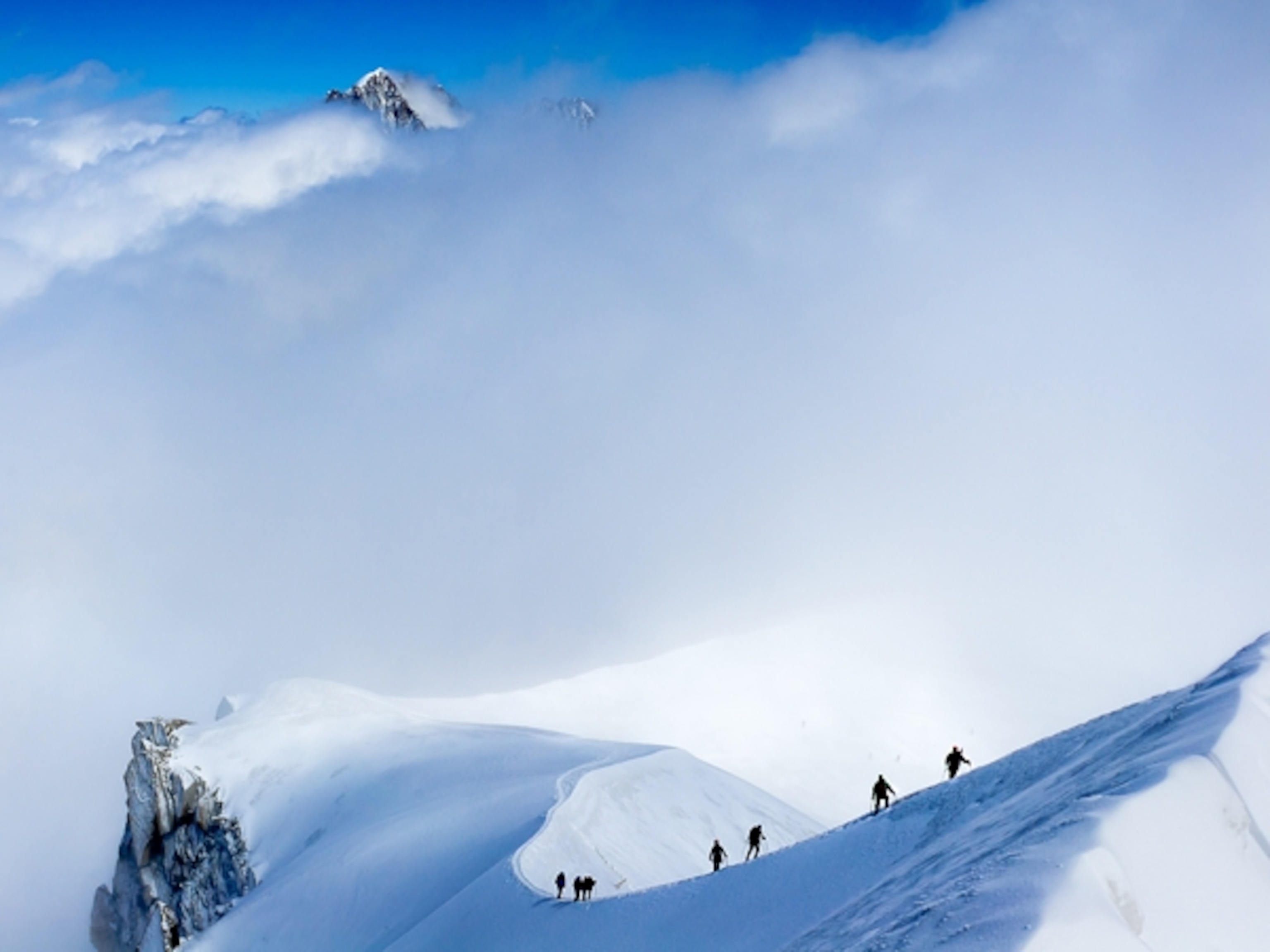
NOLS: High Altitude Tips – How to Stay Safe and Feel Good
Contributing writer Casey Dean helped with this post.
We have peaks on the brain here at NOLS, as one of our own returns from an expedition to the highest point in the world and our Expedition Denali team prepares for a summer of training on glaciers in Alaska, the Waddington, and the Wind River Range.
But with the exhilaration of our historic endeavor must come education on the risks of altitude, including how to prevent, recognize, and treat altitude illness is imperative when traveling in high-altitude environments. But some tips from wilderness medicine curriculum director Tod Schimelpfenig can help you climb wisely and safely.
Six factors can affect whether you suffer altitude illness and how severe it can be:
1. Rate of ascent. The faster you climb, the greater the risk, so ascend slowly.
2. Altitude gained (especially sleeping altitude). The higher you sleep, the greater the risk, so stick with the mantra, “Climb high, sleep low.”
3. Length of exposure. The longer you stay high, the greater the risk.
4. Level of exertion. Hard exertion, without rest or hydration, increases the risk, so rest and hydrate regularly.
5. Hydration and diet. High-fat and high-protein diets and dehydration may increase the risk. Stick to a high-carbohydrate diet.
6. Inherent physiological susceptibility. Some people are simply more likely to become ill, and we don’t know why.
There are three common types of altitude illness. Acute mountain sickness (AMS) is the most common, and left untreated can progress into high-altitude cerebral edema (HACE), which can be sudden and severe. Finally, high-altitude pulmonary edema (HAPE) is less common but more serious.
Signs and symptoms of AMS
• Headache
• Malaise
• Loss of appetite
• Nausea, vomiting
• Disturbed sleep
Treatment of AMS
• Hydration
• Rest (light exercise is OK)
• Pain medication for headaches
• Descend if symptoms worsen or signs of HAPE or HACE develop
• Avoid sedatives
Signs and symptoms of HAPE
• Signs of AMS
• Shortness of breath on exertion, progressing to shortness of breath at rest
• Fatigue
• Dry cough progressing to wet, productive cough
• Increased heart and respiratory rate
• Rales, sounds of fluid in the lungs
• Treatment of HAPE
• Descend at least 2,000 to 3,000 feet until symptoms abate
• Oxygen may be helpful
Signs and symptoms of HACE
• Signs of AMS
• Lack of muscle coordination
• Severe lassitude
• Headache
• Nausea and vomiting
• Neurological signs such as vision disturbances, paralysis, seizures, hallucinations
• Altered mental status
Treatment of HACE
• Descent
• Oxygen
Remember, the ultimate goal is not the summit; it’s the journey. The mountain will still be there next time, and the memories will always stick with you. Expedition Denali team member Dudley Edmondson put it best last weekend when he said, “It really isn’t about getting to the summit. It’s about what we do when we get back and tell our stories.”
Go Further
Animals
- Soy, skim … spider. Are any of these technically milk?Soy, skim … spider. Are any of these technically milk?
- This pristine piece of the Amazon shows nature’s resilienceThis pristine piece of the Amazon shows nature’s resilience
- Octopuses have a lot of secrets. Can you guess 8 of them?
- Animals
- Feature
Octopuses have a lot of secrets. Can you guess 8 of them?
Environment
- This pristine piece of the Amazon shows nature’s resilienceThis pristine piece of the Amazon shows nature’s resilience
- Listen to 30 years of climate change transformed into haunting musicListen to 30 years of climate change transformed into haunting music
- This ancient society tried to stop El Niño—with child sacrificeThis ancient society tried to stop El Niño—with child sacrifice
- U.S. plans to clean its drinking water. What does that mean?U.S. plans to clean its drinking water. What does that mean?
History & Culture
- Gambling is everywhere now. When is that a problem?Gambling is everywhere now. When is that a problem?
- Beauty is pain—at least it was in 17th-century SpainBeauty is pain—at least it was in 17th-century Spain
- The real spies who inspired ‘The Ministry of Ungentlemanly Warfare’The real spies who inspired ‘The Ministry of Ungentlemanly Warfare’
- Heard of Zoroastrianism? The religion still has fervent followersHeard of Zoroastrianism? The religion still has fervent followers
- Strange clues in a Maya temple reveal a fiery political dramaStrange clues in a Maya temple reveal a fiery political drama
Science
- NASA has a plan to clean up space junk—but is going green enough?NASA has a plan to clean up space junk—but is going green enough?
- Soy, skim … spider. Are any of these technically milk?Soy, skim … spider. Are any of these technically milk?
- Can aspirin help protect against colorectal cancers?Can aspirin help protect against colorectal cancers?
- The unexpected health benefits of Ozempic and MounjaroThe unexpected health benefits of Ozempic and Mounjaro
- Do you have an inner monologue? Here’s what it reveals about you.Do you have an inner monologue? Here’s what it reveals about you.
Travel
- Follow in the footsteps of Robin Hood in Sherwood ForestFollow in the footsteps of Robin Hood in Sherwood Forest
- This chef is taking Indian cuisine in a bold new directionThis chef is taking Indian cuisine in a bold new direction
- On the path of Latin America's greatest wildlife migrationOn the path of Latin America's greatest wildlife migration
- Everything you need to know about Everglades National ParkEverything you need to know about Everglades National Park